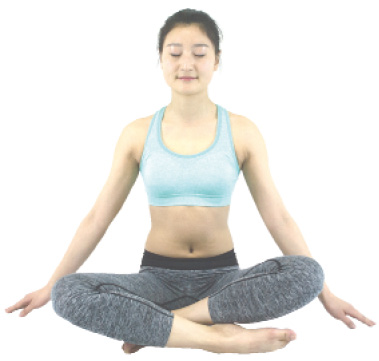How to do yoga meditation for beginners?

The most suitable yoga for meditation is often referred to as "Hatha yoga." Hatha Yoga is a traditional form of yoga that combines physical postures (asanas), breath control (pranayama), and meditation techniques to achieve balance and harmony between the mind and body.
Hatha Yoga provides an excellent foundation for meditation because it focuses on preparing the body and mind for stillness and deep relaxation. The practice of asanas helps release physical tension and improves flexibility, making it easier for the body to sit comfortably during meditation. Pranayama, the practice of breath control, helps calm the mind and brings focus and awareness to the present moment, which is essential for successful meditation.
Within Hatha Yoga, there are specific meditation techniques that are commonly taught and practiced. Some of the most suitable meditation practices include:
Breath Awareness Meditation: This technique involves focusing your attention on the natural rhythm of your breath, observing each inhalation and exhalation without trying to control it. It helps to anchor the mind and cultivate present-moment awareness.
Mantra Meditation: In this practice, a sacred word or phrase (mantra) is repeated silently or aloud to still the mind and deepen concentration. Repeating the mantra helps quiet the mental chatter and lead the mind into a state of inner stillness.
Guided Visualization: This meditation technique involves visualizing specific images or scenarios guided by an instructor's voice or recorded audio. It allows the mind to transcend everyday thoughts and enter a state of deep relaxation and receptivity.
Loving-Kindness Meditation (Metta): Metta meditation is a practice of cultivating feelings of love, compassion, and goodwill towards oneself and others. It promotes a sense of interconnectedness and emotional well-being.
Chakra Meditation: This meditation focuses on the body's energy centers (chakras) to balance and align the flow of energy, leading to a sense of harmony and centeredness.
Ultimately, the most suitable yoga for meditation will depend on individual preferences and needs. Some people may find a gentle Hatha Yoga practice best suited to prepare for meditation, while others might prefer more vigorous yoga styles like Vinyasa or Ashtanga to release physical tension before settling into meditation. It's essential to explore different practices and find the one that resonates best with you, as meditation is a deeply personal journey. A qualified yoga instructor can provide guidance and help tailor the practice to your specific requirements and goals.
Yoga Meditation Techniques
"Meditation" in yoga means "awareness" and is a method of regulating emotions in yoga. Meditation is a way of thinking, and through meditation and communication with the subconscious, modern people can achieve the goal of stress reduction and spiritual beauty. In yoga, "meditation" is like facing a lake – when the lake is calm, you can see the bottom clearly, but if the surface is turbulent and waves are crashing, nothing can be seen. The same applies to our thoughts; only when our minds are calm can we see and feel inner peace and tranquility.

The Three Main Yoga Meditation Techniques:
Breath Observation:
Focus your attention on the steady and deep breaths. Gradually narrow your attention to a specific area, such as the tip of your nose or a small spot just outside the tip of your nose, and breathe evenly in and out. Pay close attention to the changes between each inhalation and exhalation, without thinking about anything else.
External Object Observation:
You can semi-close your eyes and relax slightly, concentrating your peripheral vision on a fixed point about 30 centimeters in front of you. The focal point can be an image or a candle flame. Choose objects that facilitate concentration, simple in nature, with single and bright colors to avoid distractions. After observing it for a while, slowly close your eyes but keep visualizing the same simple image in your mind while maintaining a smooth breath.
Internal Observation:
Internal observation allows you to explore deeper layers within yourself. In addition to the breath observation mentioned earlier, you can also focus on points like the third eye, throat chakra, heart chakra, and others. If distractions arise, gently return your focus to the internal point of observation without letting your attention scatter, maintaining a state of tranquil focus. The duration of meditation should not be too long, especially for beginners. Meditating attentively for 5 minutes is already quite effective; rushing for results may lead to the opposite effect. As you become more accustomed to and familiar with meditation, you can gradually extend the duration. However, it's essential to remember to keep your body and mind completely relaxed during the practice, avoiding unconscious frowning or clenching of fists, and strive to relax your facial expressions.
Please indicate the address of this article for reprint https://www.sportshealthprogram.com/learn-yoga/202307736.html





















